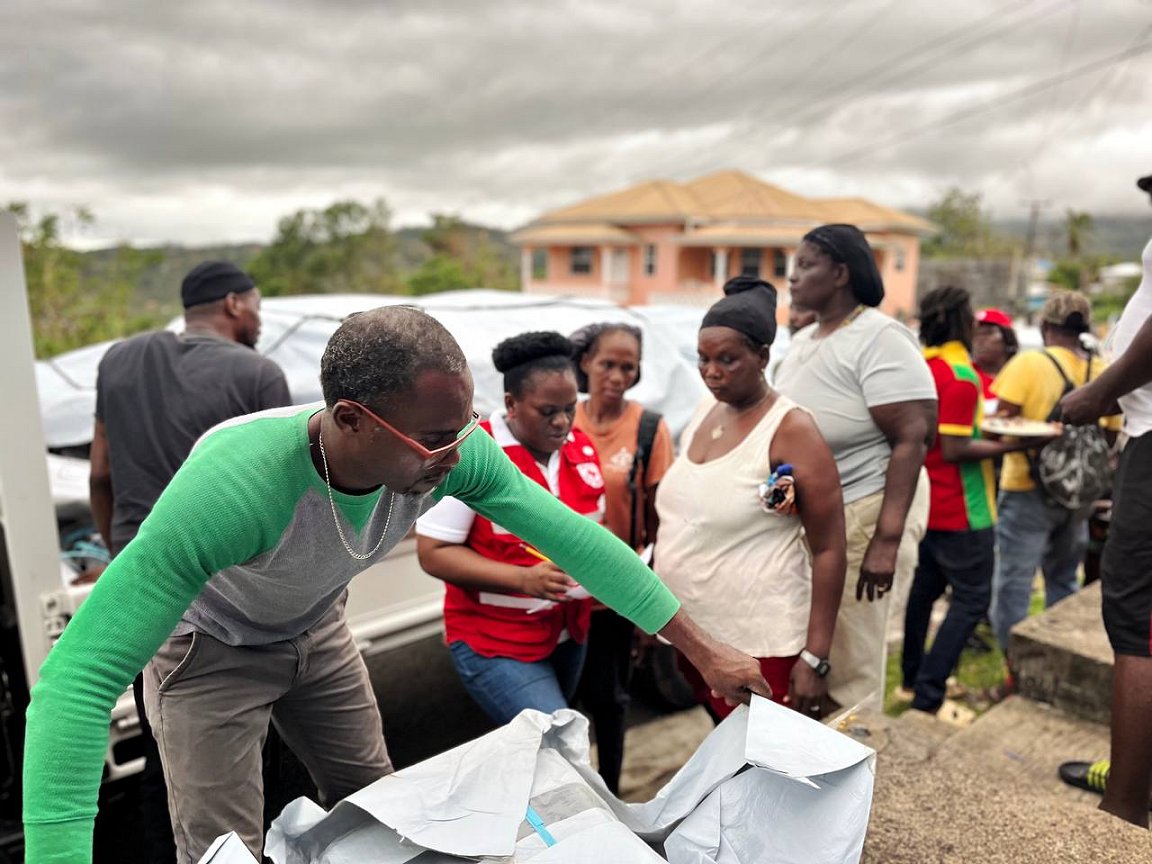
‘I want people to know this: climate change has turned storms into monsters’

By Susana Arroyo, IFRC Communications Regional Manager for the Americas
(This story appeared first on the IFRC website late last month. It has been edited slightly here for length.)
Never before has a Category 4 storm emerged from the Atlantic in June, the first month of the six-month Atlantic hurricane season. This is the first time the region been exposed so early in the year to a hurricane whose winds and heavy rains cost lives and led to such widespread damage.
The extremely warm waters of the South Atlantic acted as fuel for the storm, quickly turning it into a major hurricane. More than 1.2 million people were affected in Barbados, Grenada, Jamaica and St Vincent and the Grenadines, the hardest hit islands.
What does the link between hurricanes and the climate crisis mean to the people most affected? The IFRC’s Communications Regional Manager for the Americas, Susana Arroyo, was on the Grenadian island of Carriacou four days after Beryl hit. She spoke to three families who agreed to share what they went through and what they are feeling about the future, with five more months of hurricane season still ahead.
Beatriz retired last year and after 30 years working in the US decided to return to Carriacou, her home island. When she heard a storm was coming, she was not afraid – she had been through it before. She stocked up on water, prepared her lantern, got her animals to safety, and waited.
Beryl destroyed her house, her possessions and the memories of a lifetime. “I’m too sad to talk about what I’m going through, but I want people to know this: climate change has turned storms into monsters.”
Leroy, his wife and three children ran a shop in Carriacou, selling food and groceries to neighbours and tourists. He had rebuilt his life there after Hurricane Ivan in 2004 completely destroyed his family’s home and business on Grenada, the main island of the country’s archipelago.
“I am strong, but I am not sure I can start from scratch again and again. Hurricane Beryl took away my shop, my house, my hope. I feel desperate to think that there are many more to come.
“I thought I had my quota of destruction with Ivan, but no, I still had to deal with Beryl.”
Leroy said he wasn’t ready to show me what was left of his home and business. He’d been there once after the hurricane, and it was so heartbreaking he didn’t want to go back.
He will eventually, he said. And he will recover and start all over again, but it terrifies him to think about the likelihood of another hurricane wiping it all out again.
‘I am tired of recovering from disasters’
This year alone, up to 25 storms are forecast, 13 of which could become hurricanes, hopefully not as devastating as Beryl.
In the first half of 2024, high temperatures and lack of rainfall led to heatwaves, fires and a drought that threatened Grenada’s water supply. Just as the country was recovering from the medium-term effects of these crises, Hurricane Beryl hit.
“We were recovering from a drought, now we should recover from Hurricane Beryl. I am tired of recovering from disasters, I just want a safe life for me and my children,” says Agnes.
“We needed moderate and steady rains, not heavy, short and destructive like Beryl,” she told me, wondering how many more disasters she and her children would have to face.
The peak of the rainy season is between August and September, but this is also when the most frequent and destructive storms occur. Agnes hopes that, at least this year, none of them will hit Grenada’s islands.
The road to recovery will be a long one, volunteers and local Red Cross staff are already working hand-in-hand with communities to bring assistance, protection, and recovery support to the hardest-hit families through an IFRC emergency appeal that aims to reach 25,000 people across Saint Vincent and the Grenadines, Grenada, Barbados, and Jamaica.
Grenada Red Cross volunteers distributed essential relief items such as tarpaulins, hygiene and cleaning kits, jerrycans, and food bags to families in St Mark and St Patrick, Grenada. (Photo: Susana Arroyo/IFRC)